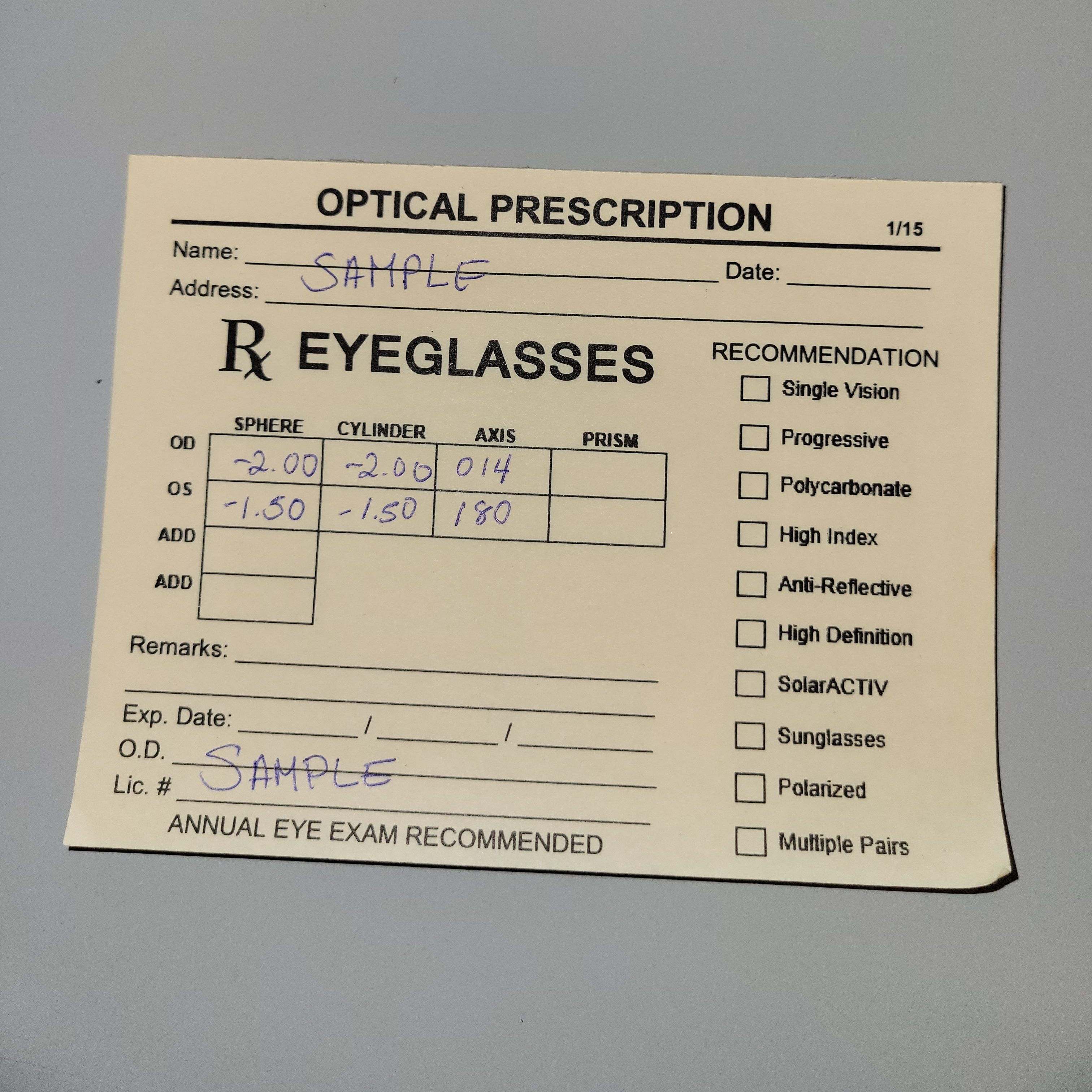So your kid just got a prescription for eyeglasses, but what does that prescription even mean?

Understanding eyeglass prescriptions is important for several reasons:
- Proper vision correction: Eyeglass prescriptions are made to a persons specific vision needs, and accurate prescriptions guarantee that glasses provide the correct type and strength of lenses for clear vision.
- Eye health: Eyeglasses are a medical device, and wearing the wrong prescription can lead to eye strain, headaches, and even damage to eyesight.
- Making a well-informed choice: Knowing what the different components of an eyeglass prescription mean can help parents make well-informed choices about the lenses that are best for their child’s needs.
What is an Eyeglass Prescription
In the USA, an eyeglass prescription is a document written by an Ophthalmologist or Optometrist that explains the corrective measures needed to correct a person’s vision. There are a few important pieces of information written on the prescription depending on the vision needs of the person. On a prescription form you will likely see boxes labeled, OD, OS, Sphere, Cylinder, Axis and Add. This tells the Optician or eyecare professional who helps you pick out lenses for your child about your child’s vision needs. The Optician will understand if your child is farsighted, nearsighted, has astigmatism or needs bi-focals / progressive lenses.
Understanding Prescription Lingo

The prescription line always starts with OD which in simple terms means, right eye, therefore, OS is the left eye. Following OD or OS or both, there will be numbers written under the column Sphere. The numbers and symbols written here explains if your child is farsighted or nearsighted and the amount of power that is in the lenses. Some prescriptions have numbers written under cylinder and axis, these numbers go together. The cylinder refers to the correction needed for astigmatism and axis refers to the direction the cylinder correction should be applied. Some children will have a number written under the column add. The add or addition is the power added to the distance prescription to help a person see objects more clearly up close. If the add section has numbers filled in, the Optician understands that your child needs bi-focals or progressive lenses.
Reading an Eyeglass Prescription
Starting with the Sphere you will see numbers preceded by a – or + symbol. If the sphere starts with a – symbol this means that your child is nearsighted or has the best vision when objects are closer to their eyes. If the sphere starts with a + symbol this means that your child is farsighted or has the best vision when objects are further from their eyes.
As stated before, the cylinder and axis are always both written if your child has astigmatism. The cylinder can start with either a – or a + symbol. The axis which is the location of the cylinder is expressed in degrees so you may see anything from 1o – 180o written at the end of the line of numbers on the prescription.
The add (addition) which is the addition numbers added to the distance prescription will always be written with a + symbol in front of the numbers.
Just like the English language, eyeglass prescriptions in the US, are read from left to right and from top to bottom. It is important to go over the prescription with an eyecare professional to ensure your child has the right lenses for their vision needs.
90% of Your Child’s learning is Visual
According to scientist up to 90% of information transmitted to the brain is visual. Your child is learning from what they see on the board at the front of the room, what they are reading on their tablets, laptops and school books. If you want to give them the best chance to absorb all that information, make sure to have their eyes checked routinely by an Optometrist or an Ophthalmologist. As children grow, their eyes grow and their eyeglass prescriptions will most likely change. Speak to your eyecare professional about how often your child needs an eye exam.
Future articles will cover what your child sees with uncorrected vision, different types of lens options such as blue light filter, anti-reflective lenses and transition lenses and how your child’s frames should fit. Stay tuned!


Very helpful, I finally understand the difference between a plus and minus sphere prescription!
LikeLiked by 1 person
the information presented in this article is important for parents to consider. It’s crucial to understand the impact that vision has on a child’s learning and development, and routine eye exams can help ensure that any potential issues are caught early and addressed I learned so much and everything was so clear. Thank you so much for expanding my knowledge on glasses prescription!
LikeLiked by 1 person